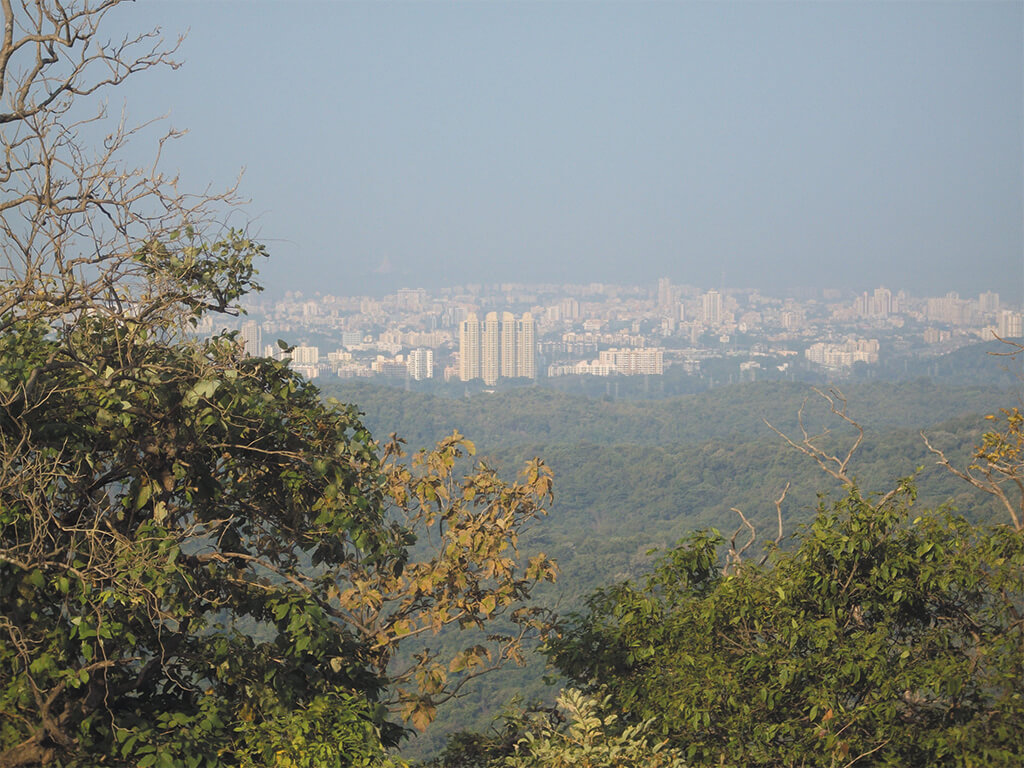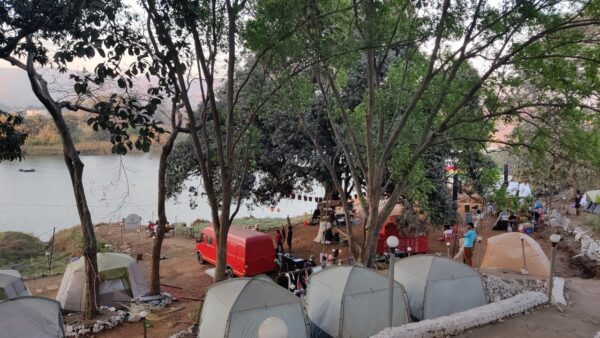The idea of nature in cities is neither new nor unique, yet it is strange how we, collectively as people and governments, have ignored it to our own detriment. In doing so, we have erased the rich and diverse natural areas – trees, urban forests, water bodies – from our collective knowledge and memory. A direct consequence of this is our imagination of cities as places that put human productivity and commercial profit above all else and relegate nature to an afterthought, if at all.
The hallmark of a developed city is, by default, booming real estate and ever-increasing construction which hardly contribute to housing and amenities for the marginalised majority. The aggressive promotion of this mindset by governments, especially in the current political order, and the equally aggressive campaigns by real estate developers fuel people’s aspirations that this is a “better living environment” while, ironically, disrupting or violently destroying nature in cities.
This is normalised in our shrinking imagination of cities and reflects in the way governments and planners approach urban planning and design – stripping down natural areas for construction or incorporating nature in a tokenistic and superficial way such as providing green spaces atop podiums in large commercial and residential complexes instead of natural green on the ground. The magnificence of nature is lost. Its significance is sustaining healthy people and the planet, its ability to provide joy and visual relief in congested cities, and its importance in mitigating climate change are lost too.
The normalisation has meant an ongoing assault on natural areas – wetlands are filled, mangroves axed, watercourses reduced to drains, trees mindlessly cut and pruned, green spaces shrunk – without protests except by a committed handful. We tolerate this though the normal should be to have more nature in cities. Such destruction has also severed the relationship between nature and people, and shrunk our understanding of the rich values of this relationship. Resistance, therefore, is minimal and scattered. This is unsustainable, especially in the climate change era.
Nature shapes and defines cities. Nature can also heal cities and improve life quality for millions. It supports an incredible amount of biodiversity, offers ecological services, helps reduce the Urban Heat Island effect and clear the air of pollutants, and brings meaning to stressful city life. It must also be recognised as a shared habitat for non-human life, a responsibility that people must discharge. Nature in cities needs to be conserved and celebrated.
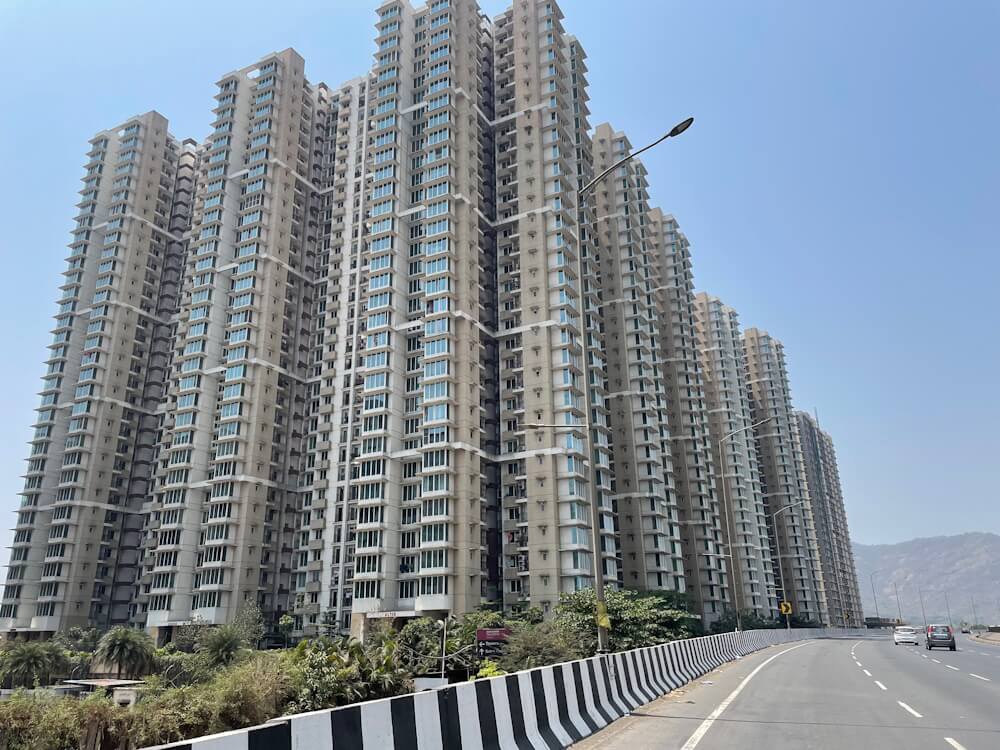
Photo: PK Das and Associates
Recognise ecological footprints in cities
If we are to build sustainable biophilic cities[1] or nature-led cities,[2] with an abundance of green and blue which are ideally networked to restore the relationship between nature and people, we will have to start by calling out the skewed priorities of governments, real estate developers, and vested planners. Four questions confront us.
One, in what ways can the nature-people relationship be re-established through nature-led planning and design of cities? Two, how can people’s knowledge and lived experience be harnessed to influence government decisions or plans about nature in cities? Three, how can the oft-repeated official pretence be called out that there is not enough land in a city which necessitates the denudation of natural areas? And, four, how can the inequality of access to lush nature-rich areas be reduced through redistribution so that nature is not a luxury in privileged areas while deprived areas have fewer or no natural spaces?
Each of these questions requires dialogue between people, between people and governments, among professional planners and designers – from the neighbourhood to the city and state government – all of whom must accept the critical role nature plays in keeping cities healthy and sustainable, and then commit to targeted action in policies and rules, and their implementation. There should be an inviolable understanding that nature is important to cities which means nature-led planning will be the norm,[3] that nature conservation is as significant as commercial development. The socio-economic advantages of giving primacy to nature will follow.
This requires us to move away from what is understood today as urban development. This framework of development prioritises profit over everything – nature, inclusivity, sustainability, and democracy. Aggressive expansion plans to further profit motives of private real estate developers, at the cost of excluding large sections of people and destroying natural areas, cannot be the normalised approach to city-making. The demonstration of coercive power in cities, by governments and private businesses, has included overpowering nature with capital-intensive engineering projects that control and colonise people’s lives as well as the urban commons, or the city’s nature.
Mending this must begin, in governments and planning community, with the recognition that cities have ecological footprints because nature existed here before cities did[4] and unsustainable profit-led urbanisation has brought about dramatic – mostly negative – changes.
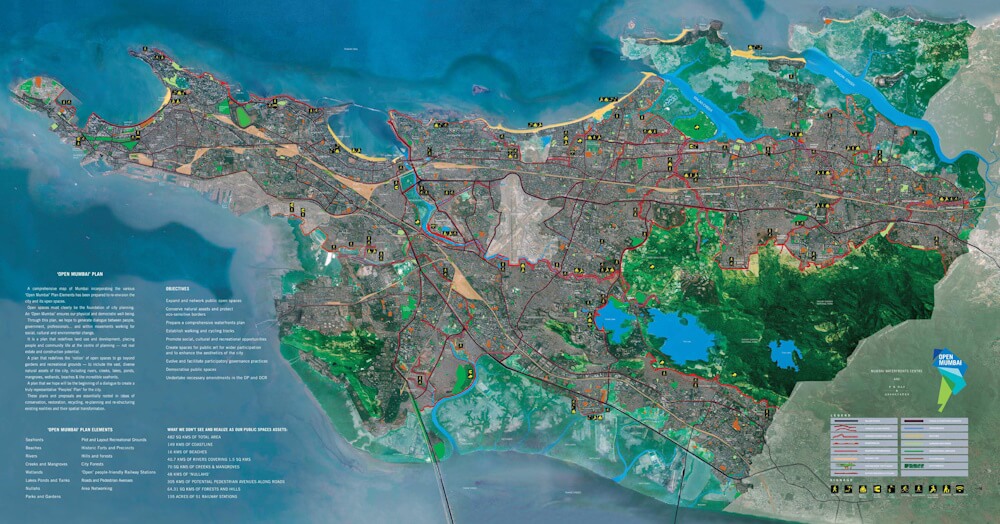
Source: PK Das and Associates
The segregation phenomenon
Governments in many countries, including in democracies, are actively and aggressively segregating people with politics of hatred across neighbourhoods, cities, and states. As people and places become fragmented and polarised based on religion or caste or race or gender, cohesive and secular structures in societies are breaking down which, in turn, enables and strengthens majoritarian regimes. In the process, democracy itself is threatened.
This reflects segregation in nature. The intertwined and interdependent elements of natural ecology in cities are ripped apart, the imbalance leading to rising temperatures, sea-level rise, increased floods, cyclonic winds, and forest fires impacting the web of life itself.[5] As landfilling of seashores and wetlands is pursued, mangroves destroyed,[6] rivers and watercourses narrowed and their relationship with land severed by the construction of concrete walls,[7] hills flattened and quarried, forests hacked down, the segregation between the natural elements as well as segregation between nature and people set in.
These severed relationships have brought us a climate crisis but governments unabashedly ignore the climate crisis and increase the buildable areas in cities without a comprehensive assessment of its impact. The justification[8] [9] [10] offered is that higher Floor Space Index or Floor Area Ratio, allowing taller buildings, is needed to address the shortfall in housing and amenities. However, experience shows that these result in the production of high-cost exclusive spaces for less than 15 percent of a city’s population and generate unfettered profits for developers.[11]
Cities cannot survive this way. Governments must accept the miserable failure of this model, recognise segregation, and make course-corrections towards nature-led development. As Dr Cecil Konijnendijk, Professor of Urban Forestry at the University of British Columbia, said: “…(in cities), we need nature as our neighbour all the time”.[12]


How to restore nature in cities
There are immediate and long-term measures possible. Firstly, all natural areas in a city must be recognised and mapped in a comprehensive and open manner, and a database created.[13] [14] This mapping should be done with the participation of locals in an area; they know their areas best and it instils a sense of ownership too. Such a database will provide an alternative to the data manufactured by governments to suit vested interests. Open mapping will include the diverse natural ecology in a neighbourhood, and uncover the extent of the severed relationship between people and nature.
Secondly, natural areas must be considered as integral aspects while planning the built environment instead of excluding them and treating them as dumping grounds, physically and metaphorically. Natural areas provide visual and interactive experiences, and add a dimension to public spaces. The World Health Organisation recommends that people in cities must have green spaces within 300 metres of where they live.[15]
Thirdly, a built environment must be rooted in nature and ‘building with nature’ should be adopted as the default way forward. Adequate open spaces must be provided at the ground level for natural flora and fauna. In Mumbai, governments have incentivised private developers to build over an entire plot without leaving any ground-level open space[16] [17] besides permitting the construction of a basement with a meagre 1.5metres set-back from the boundary wall. This leaves literally no space for trees and plants on the ground. The concretisation also means water does not percolate, leading to higher runoffs and floods. Sadly, this model provides inspiration to other city and state governments across India.
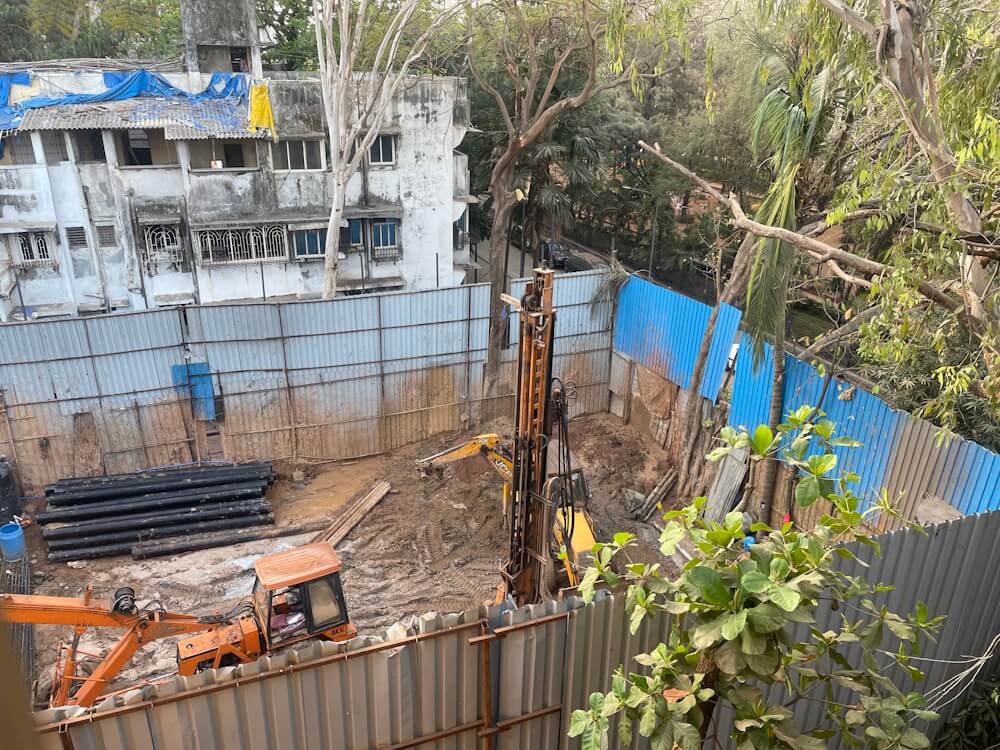
Photo: PK Das and Associates
Fourthly, there should be a comprehensive plan to conserve – and expand – various natural areas in a city. Annual environment status reports, done with people’s participation, are a must. In the United Kingdom, an Environment Improvement Plan[18] to restore nature and increase the nation’s prosperity includes commitments to create or restore 5,00,000 hectares of habitat for wildlife through 25 new or enlarged national nature reserves besides restoring 644 kilometres of England’s rivers, sets new targets for reducing plastic, glass, metal, paper and food waste by 2028, and a multi-million-pound ‘Species Survival Fund’. All of India’s cities need such plans with clear commitments and timelines.
Fifth, the governmental mindset to acquire land or destroy natural areas for land must change. Multiple examples have shown the perils of this approach whether it is coastal cities like Mumbai or hill cities like Shimla. Land-filling of natural areas for more land should be capped; the damage is already done including for projects like Mumbai’s Coastal Road[19] [20] while opportunities to create large green spaces, besides affordable housing, were willfully bypassed by governments on the nearly 600 acres of textile mill land[21] in the 1990s and on Mumbai’s eastern waterfront now. Even government land-holding agencies are trading with private developers, instead of building social housing and amenities, thereby depleting vital public land and resources.
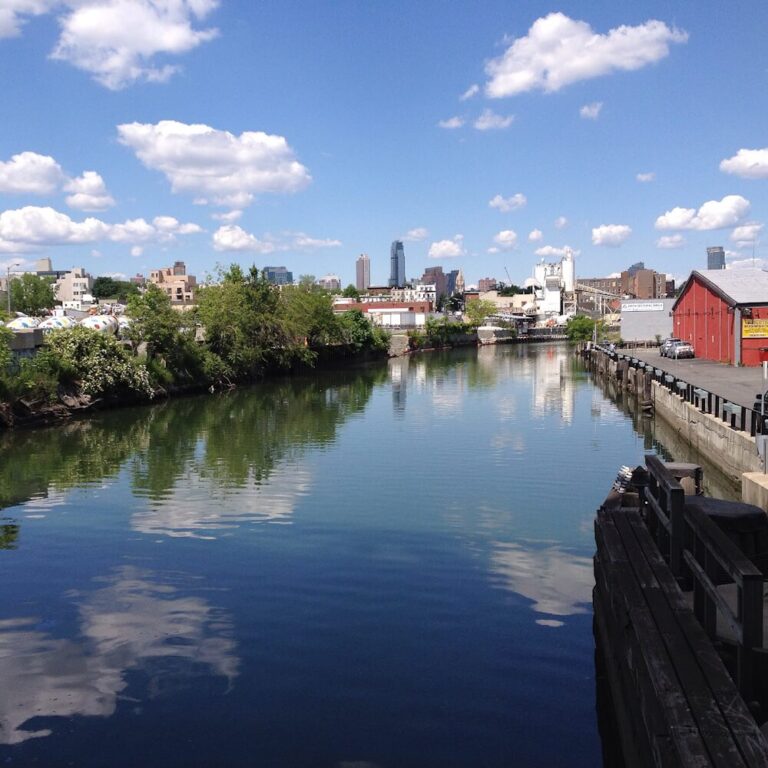
Photo: Wikimedia Commons
Sixth, the improvement of green and blue infrastructure must be made a priority for city and state governments, with budgets allocated for the purpose. This goes beyond the tree-plantation photo-ops. Governments should actively grow more trees, incentivise people to do so, develop urban forests for rich biodiversity, de-concretise and re-invigorate rivers and streams[22] to connect watercourses, build sponge parks[23] and leave a proportion of a city’s total area as a strict ecologically-protected zone where no development is ever permitted. The popular concept of riverfront development is hardly nature-friendly.
Lastly, nature in cities is at its most fascinating, grand and sustainable when networked[24] – where parks, gardens, and open spaces are all inter-connected to form a length of green spaces across different localities, where rivers, streams, creeks and other waterbodies are linked to renew the flow of water as much as possible. This green-blue network offers cities a chance to regenerate ecology and biodiversity; by making these interconnected spaces open to people along their lengths, it allows the people-nature relationship to be repaired.
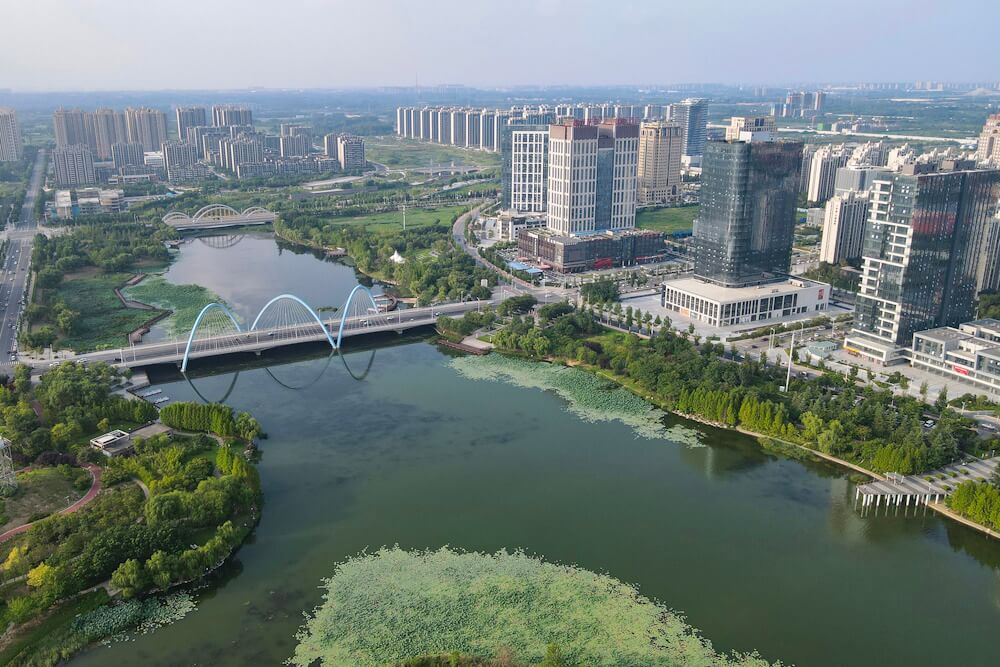
Photo: Wikimedia Commons
Linear parks[25] across neighbourhoods, when planned and built along watercourses like nallahs (drains) or old infrastructure, are an important tool in the regeneration of green in a city. Their linearity allows more people to explore the space more equitably unlike the monolithic, often barricaded, central park to which access is not easy for a large number of people in big cities. Linear parks, when built and maintained successfully, promote democratic leisure for various groups of people. When made with the participation of neighbourhood communities, they facilitate social interaction and political dialogues too.
New York’s 1.45mile High Line[26] trail is a greenway built on a former elevated train line connecting several neighbourhoods with water features, sundecks and art installations. In Mumbai, the Juhu Group steered the construction of a linear park across the Irla Nallah;[27] the concept can be implemented across several other areas. Such a flowing natural area will make people aware of the value of nature in the city and help build movements to collectively protect and nurture more such spaces.
Shift imagination to cities in nature
The re-envisioning of our cities need not only be about conserving nature in cities but a fundamental shift in the very approach to city-making – imagining cities in nature. This requires individuals, people’s movements, policy makers, planners, capitalists, and governments to collectively break the order that now prevails – of considering nature as secondary to urban development – and normalising its opposite in which nature is treated as the non-negotiable within which buildings and infrastructure are constructed.
The prevailing order has been thrust upon millions who live and work in cities, it has ruptured nature, segregated people from nature, and proved to be unsustainable as climate impact shows. Breaking the order to re-imagine cities in nature is the way forward. This would also mean that the increasing reliance on the private sector to provide for nature will be challenged with alternatives. And, the urban commons, nature, can be placed at the heart of cities. Public land and resources – of which the governments are custodians, not landlords – must be utilised exclusively for regenerating the green-blue infrastructure. There is rarely a shortage of land or resources, what is needed is their redistribution.
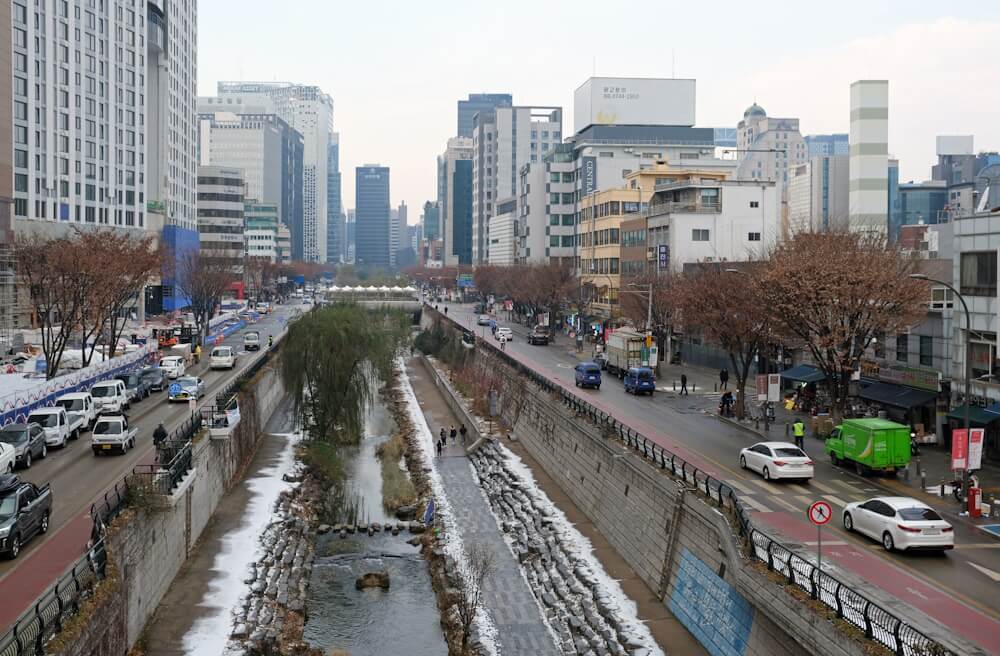
Photo: Wikimedia Commons
When nature is given the primacy it deserves in planning and making cities, there is a chance to also change the prevailing construction patterns. For example, the density of settlements and the inequity of spaces can be addressed to make them more equitable across well-off and poorer neighbourhoods. Incomes and wealth should not determine how congested people’s living spaces are or how little of nature’s bounty they can enjoy.
Placing nature at the centre of city-making will naturally mean more open spaces, more green, and sustainable neighbourhoods which will positively impact heat stress, water-logging, and air quality. It may seem daunting but it is indeed possible to situate cities in nature. We are limited by our own imagination, governmental biases, and profit-motive of a few. The first step would be to collectively map nature in our neighbourhoods, then prevail upon governments to nurture and develop it as integral to our lives and habitats.
PK Das is an urban planner, architect and activist with more than four decades of experience. He has been working to establish a close relationship between his discipline, urban ecology and people through a participatory planning process. He has received numerous awards including LSE Urban Age award and the prestigious Jane Jacobs International Medal for his work in revitalising open spaces in Mumbai, rehabilitating slums and initiating participatory planning process. He is the founder of Question of Cities.
Cover photo: Mumbai, viewed from Sanjay Gandhi National Park in Mumbai. Credit: Wikimedia Commons

